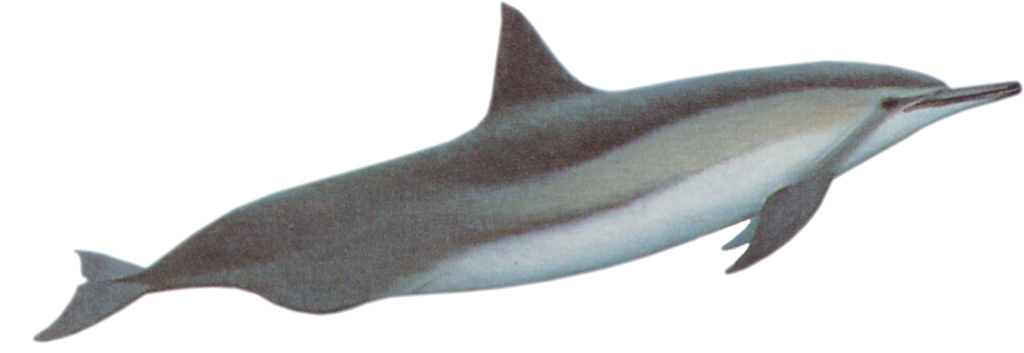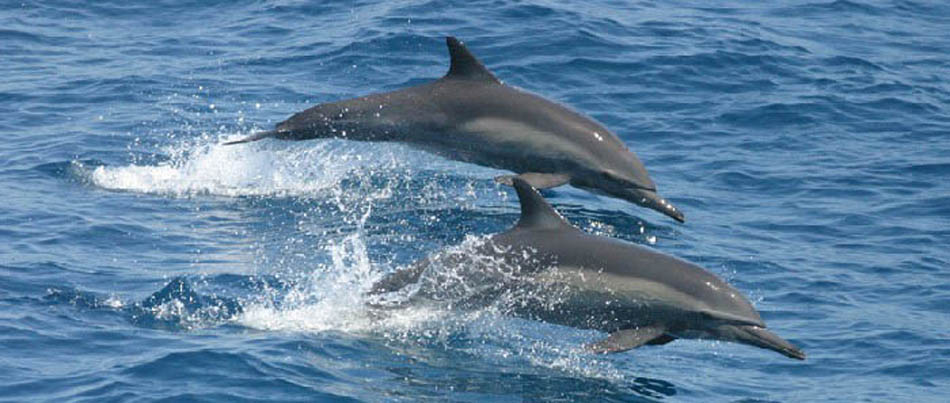Oceanic Dolphins include the Delphinidae and Monodonitae members (details from the family description pages are available from the corresponding drop-down menus.) The menu links will lead you to information on all members of this taxonomic family, with navigation buttons on the top of each page for photographs, video and audio recordings (where available).
OCEANIC DOLPHINS
DELPHINIDAE
Depending on what is considered to be a valid species, and also upon whether one lumps several diverse cetacean groups within the family, there are at least thirty and perhaps more than fifty species within the family Delphinidae, making it the largest family of cetaceans.
Cetologists have split or lumped these species throughout the history of taxonomy, and the situation is further confused because a 3 ft (1 m) dolphin and a 30 ft (9.1 m) whale are included in the family Delphinidae with almost every other toothy cetacean in between.
We have lumped all of the dolphinlike creatures with identical conical teeth in the family Delphinidae, but we recognize and emphasize that much of the information essential to the proper ordering of this family, or these families, is not available. As Frederick True, an early authority on the cetaceans, advised, “…cetologists must be content to wait patiently until acquisition of new specimens make a complete description possible”. As a result of incidental take in fishing operations, direct harvests, and increased interest in cetaceans in general, many more specimens are available today than when Dr. True reviewed the Delphinidae in 1889, but many of the issues concerning relationships remain unresolved.
The questions exist in part because modern dolphins have been successful in occupying many diverse habitats and roles, and also because we humans like to classify all living things in an orderly way that suits our curatorial purposes. Unfortunately, the natural cycle of evolution is a continuous process that defies static definition. At almost every taxonomic line we draw there will be controversy, because we want our classifications to be neat and tidy, like the books on the shelves of a rarely visited library. In any case, only we care; it appears to make no difference to the dolphins how we classify them.
All of the species included in the Delphinidae sites have numerous conical teeth, with variations in number and arrangement among the species related to efficiency in catching their various prey species. All of these dolphins also exhibit compression and fusion of the neck vertebrae, which limits head mobility but contributes to the spindle-shaped body form adapted for high-speed swimming. All have developed sophisticated echolocation capabilities that are superior to their vision in perceiving their environment, and all have specialized anatomical features related to their acoustic ability. Most a gregarious and seem to have developed elaborate social structures, including seemingly sophisticated forms of acoustic communication. These sounds associated with communication have received a great deal of attention from a number of investigators, some of whom hope to establish a system of dolphin-human communication. However, as we have noted earlier, while dolphins are clearly highly intelligent animals, they live in a world very different from ours, and it is not clear that their communication takes a form that “says” something in our terms. Of course, they may be even brighter than we imagine, and simply have nothing to say to us.








